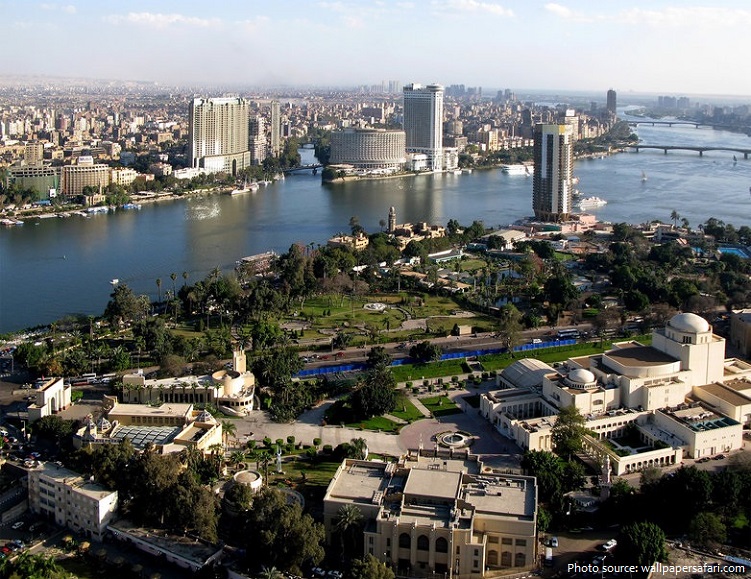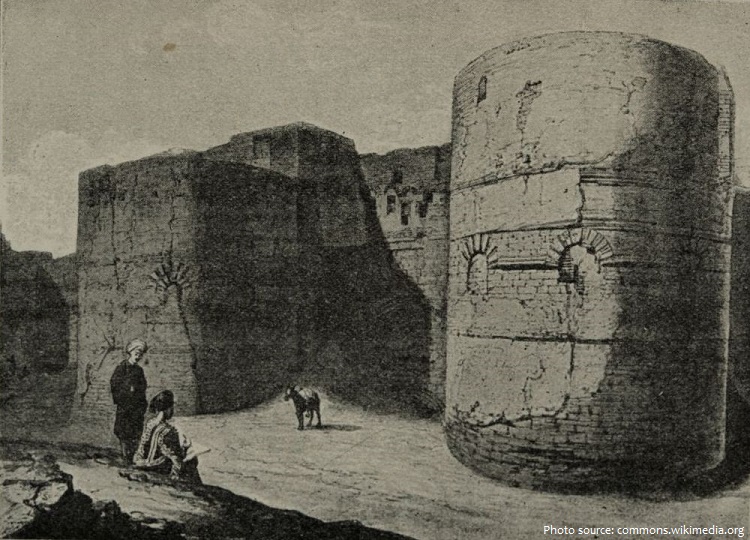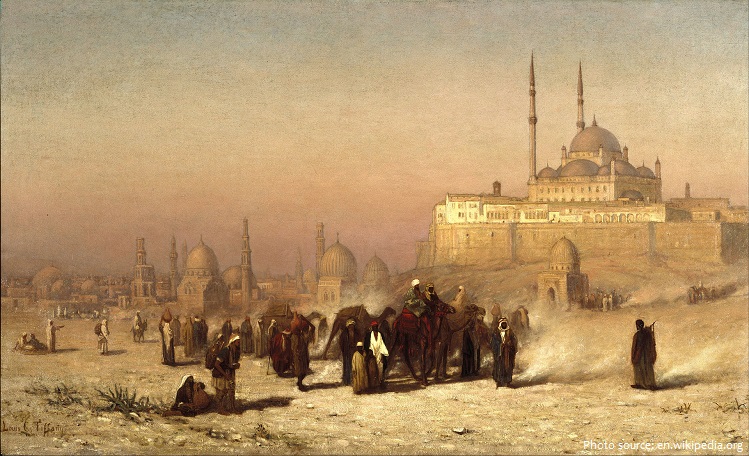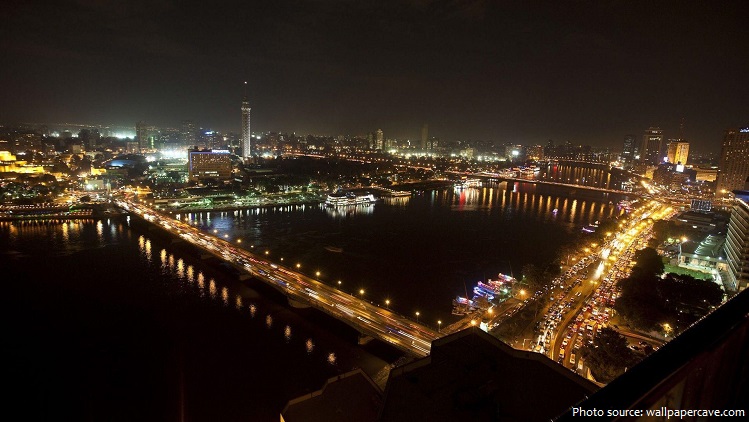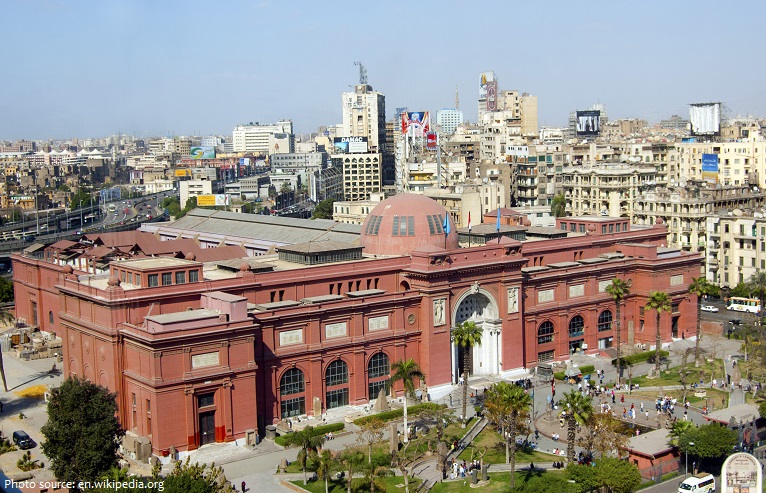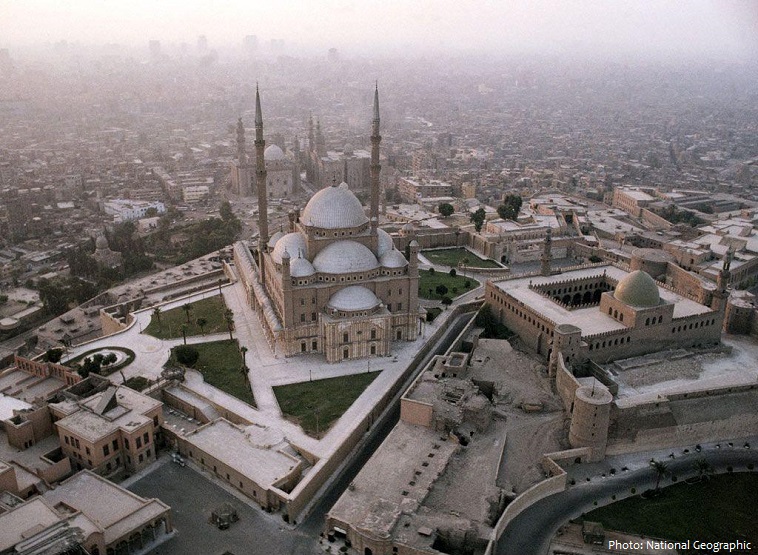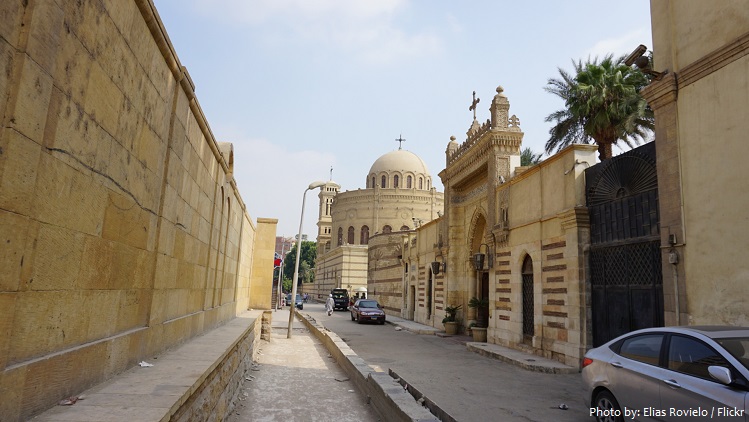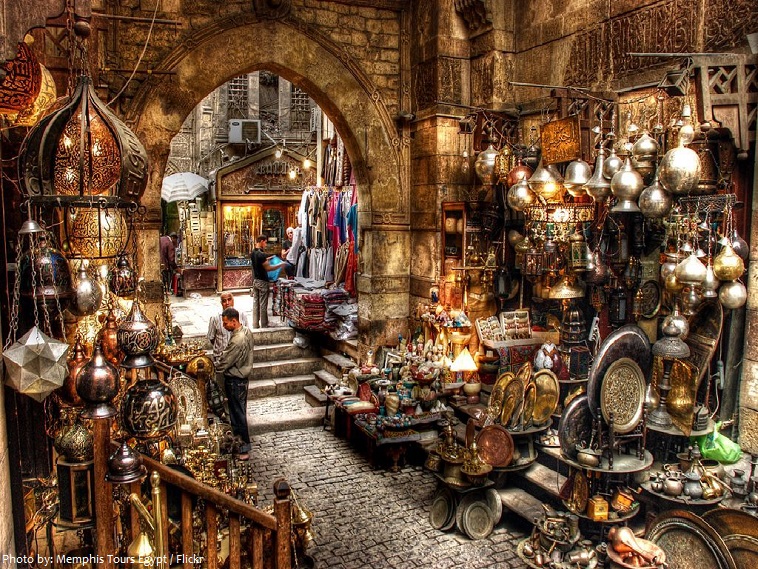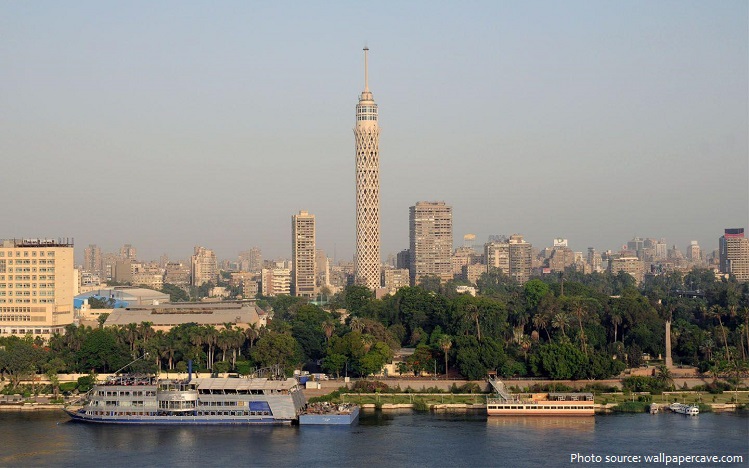Cairo is the capital and largest city of Egypt.
It is located in northern Egypt, known as Lower Egypt, 165 kilometers (100 mi) south of the Mediterranean Sea and 120 kilometers (75 mi) west of the Gulf of Suez and Suez Canal.
The city lies along the Nile River, immediately south of the point where the river leaves its desert-bound valley and branches into the low-lying Nile Delta region.
As of September 2019, the population of Cairo is about 9.7 million people. It is the most populous city in Africa.
Cairo covers a total area of 606 square kilometers (234 square miles).
The city has average elevation of 23 meters (75 feet) above sea level.
The area around present-day Cairo, especially Memphis that was the old capital of Egypt, had long been a focal point of Ancient Egypt due to its strategic location just upstream from the Nile Delta.
However, the origins of the modern city are generally traced back to a series of settlements in the first millennium.
Around the turn of the 4th century, the Romans established a fortress town along the east bank of the Nile.
This fortress, known as Babylon, was the nucleus of the Roman and then the Byzantine city and is the oldest structure in the city today. It is also situated at the nucleus of the Coptic Orthodox community, which separated from the Roman and Byzantine churches in the late 4th century.
Following the Muslim conquest in 640 AD, the conqueror Amr ibn As settled to the north of the Babylon in an area that became known as al-Fustat.
When a dissident branch of Muslim believers known as the Fatimid conquered Egypt in 969 AD, they established their headquarters in the city and called it Al-Qahira (Cairo).
The Ottomans conquered Cairo in 1517 and ruled there until 1798 when the area was captured during an expedition led by Napoleon I of France. Ottoman rule was restored in 1801.
The British effectively ruled Egypt from Cairo from the late 19th century through the period after World War I (1914-1918), when the foreign presence in Cairo began to diminish.
Cairo’s population grew rapidly during the war years, reaching 2 million by the outbreak of World War II in 1939.
Since that time, the city has continued to boom in terms of both population and development.
The Giza pyramid complex is an archaeological site on the Giza Plateau, on the outskirts of Cairo, Egypt. This complex of ancient monuments includes the three pyramid complexes known as the Great Pyramids, the massive sculpture known as the Great Sphinx, several cemeteries, a workers’ village and an industrial complex. The pyramids, which have historically loomed large as emblems of ancient Egypt in the Western imagination, were popularised in Hellenistic times, when the Great Pyramid was listed by Antipater of Sidon as one of the Seven Wonders of the World. It is by far the oldest of the ancient Wonders and the only one still in existence.
The Museum of Egyptian Antiquities, known commonly as the Egyptian Museum or Museum of Cairo, in Cairo, is home to an extensive collection of ancient Egyptian antiquities. It has 120,000 items, with are presentative amount on display, the remainder in storerooms. Built in 1901 by the Italian construction company Garozzo-Zaffarani, the edifice is one of the largest museums in the region.
The Citadel of Cairo or Citadel of Salah ad-Din is a medieval Islamic-era fortification in Cairo, built by Salah ad-Din (Saladin) and further developed by subsequent Egyptian rulers. It was the seat of government in Egypt and the residence of its rulers for nearly 700 years from the 13th to the 19th centuries. Its location on a promontory of the Mokattam hills near the center of Cairo commands a strategic position overlooking the city and dominating its skyline. At the time of its construction, it was among the most impressive and ambitious military fortification projects of its time. It is now a preserved historic site, including mosques and museums.
Al-Azhar Mosque is an Egyptian mosque in Islamic Cairo. Al-Mu’izz li-Din Allah of the Fatimid dynasty commissioned its construction for the newly established capital city in 970. It was the first mosque established in Cairo, a city that has since gained the nickname “the City of a Thousand Minarets.”
Coptic Cairo is a part of Old Cairo which encompasses the Babylon Fortress, the Coptic Museum, the Hanging Church, the Greek Church of St. George and many other Coptic churches and historical sites. It is believed in Christian tradition that the Holy Family visited this area and stayed at the site of Saints Sergius and Bacchus Church (Abu Serga). Coptic Cairo was a stronghold for Christianity in Egypt until the Islamic era, though most of the current buildings of the churches in Coptic Cairo were built after the Muslim conquest of Egypt in the 7th century.
Khan el-Khalili is one of the world’s great shopping experiences. This Middle Eastern souq (bazaar) is a labyrinthine collection of skinny alleyways established as a shopping district in AD 1400, which still rings with the clang of metal workers and silversmiths. The main streets have long ago given themselves over completely to the tourist trade (with plenty of cheap papyrus pictures and plastic pyramids on display), but divert off the main drag into the surrounding alleyways, and the tiny stores and cluttered workshops are some of the best places to pick up traditional products in Egypt. Here, you’ll find everything from antiques and gorgeous metal lampshades to locally woven textiles.
The Cairo Tower is a free-standing concrete tower in Cairo. At 187 meters (614 feet), it has been the tallest structure in Egypt and North Africa for about 50 years. It was the tallest structure in Africa for ten years until 1971, when it was surpassed by Hillbrow Tower in South Africa. One of Cairo’s well-known modern monuments, sometimes considered Egypt’s second most famous landmark after the Pyramids of Giza, it stands in the Gezira district on Gezira Island in the River Nile, close to downtown Cairo.
Cairo has the oldest and largest film and music industries in the Middle East, as well as the world’ssecond-oldest institution of higher learning, Al-Azhar University.
Cairo’s metro, one of two in Africa (the other being in Algiers, Algeria), ranks among the fifteen busiestin the world, with over 1 billion annual passenger rides.
The city name “Cairo” can be translated as the one who won.
Cairo is sometimes called “Mother of the World” (Um al Dunya).

